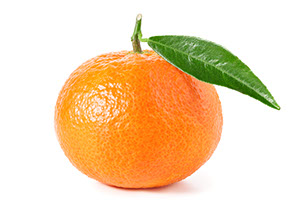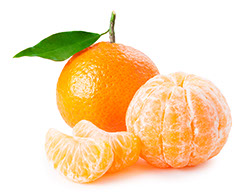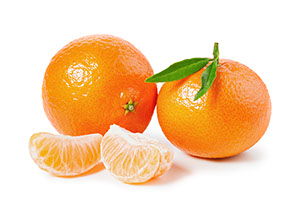
Overview
Varieties
Nutrition Information
Overview
Clementines
A clementine (Citrus × clementina) is a tangor, a hybrid between a willowleaf mandarin orange and a sweet orange, so named in 1902. The exterior is a deep orange colour with a smooth, glossy appearance. Clementines can be separated into 7 to 14 segments. Similar to tangerines, they tend to be easy to peel. They are typically juicy and sweet, with less acid than oranges. Their oils, like other citrus fruits, contain mostly limonene as well as myrcene, linalool, α-pinene and many complex aromatics.
Source: Wikipedia.org

Varieties
Seedless - exists in North Africa. Seedless versions of the clementine are known as the common type (seedless or practically seedless). Common Clementines are very similar to the Monreal type; the two types are virtually identical in terms of tree specifics. The seedless Clementine tree is self-incompatible; which is why the fruit has so few or no seeds. In order to be pollinated, it needs to be cross-pollinated.
Monreal - exists in North Africa. The Monreal clementine can self-pollinate and has seeds. Monreal clementines are on average larger than its seedless variety and has a more abundant bloom and is sweeter.
Source: Wikipedia.org
Nutrition Facts
Clementines
Amount Per 1 fruit (74 g)
Calories 35
% Daily Value*
Total Fat 0.1 g 0%
Sodium 1 mg 0%
Potassium 131 mg 3%
Total Carbohydrate 9 g 3%
Dietary fiber 1.3 g 5%
Sugar 7 g
Protein 0.6 g 1%
Vitamin C 60% Calcium 2%
Iron 0% Vitamin D 0%
Vitamin B-6 5% Magnesium 1%
*Percent Daily Values are based on a 2,000 calorie diet. Your daily values may be higher or lower depending on your calorie needs.

Century Farms International, Inc.
10957 NW 123rd Street Medley, FL 33178
Office: 305-436-7971 Fax: 305-436-7968



